Tennis is a challenging sport with many physical and mental health benefits. Like all intense activities, injuries are a possibility, especially in the sensitive wrist and elbow joints. Tennis elbow is the most common among athletes and can be a long-term nuisance without proper care and prevention. Here’s everything you need to know to avoid this sports injury.
Understanding Tennis Elbow
What Is It?
Lateral epicondylitis, or tennis elbow, is the most common cause of elbow pain. It occurs when the tendons around the elbow are overused, typically through repeatedly swinging a racket. However, you don’t need to play tennis to get lateral epicondylitis. It is also common in people whose work requires repeated lifting or gripping and occurs most commonly in people between 35 and 50 years old. Gradually, small or micro tears in these tendons and the surrounding muscle, will lead to chronic discomfort and inflammation. You can also develop this injury by having a poor tennis grip or technique, but repetitive motion can also inflame and injure the forearm tendons.
Symptoms
The lateral epicondyle is the bony prominence on the outside of elbow. This is where the tendons that extend the wrist and fingers and turn your palm up attach. The tendon most commonly involved is the Extensor Carpi Radialis Brevis (ECRB). Joint pain and weakness are the most common symptoms of tennis elbow. Pain is often felt when trying to grip an object, turn a doorknob or even shake hands. Pain may only be around the elbow, or it may shoot down the forearm to the wrist.
Treatment & Prevention
This injury is generally treated with rest and activity modification. If you are a tennis player, consider a larger grip, more flexible racquet or lower string tension. You can often manage pain with non-steroidal anti-inflammatory (NSAIDs) medications. Icing may help. A tennis elbow strap or counterforce brace helps relieve pain. Your orthopedic surgeon will examine you and order x-rays to confirm the diagnosis. Your orthopedist may perform a steroid injection or order physical therapy. Most lateral epicondylitis will resolve with nonoperative treatment, but surgery may be necessary if prolonged treatment does not provide relief of pain.
If you are a tennis player, the best way to prevent tennis elbow is to refine your technique. Work with a specialist to evaluate your swing and make sure you have the correct grip on your tennis racket. Stretch for at least 10 minutes before a match and for 10 minutes after to keep your joints healthy.
If you have concerns about tennis elbow or another sports injury, contact Advanced Orthopaedic Associates in Wayne, NJ. This practice has served Passaic, Bergen, and Morris counties for over 25 years, and their board-certified staff offers a broad range of services. They specialize in joint pain relief and can address discomfort in the knee, back, neck, and more.

